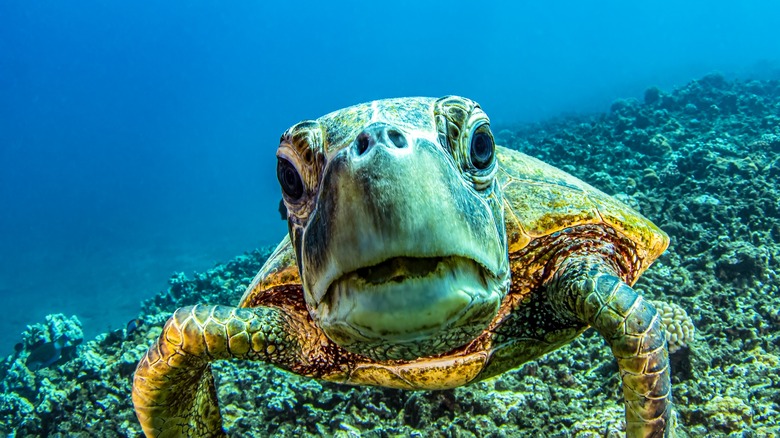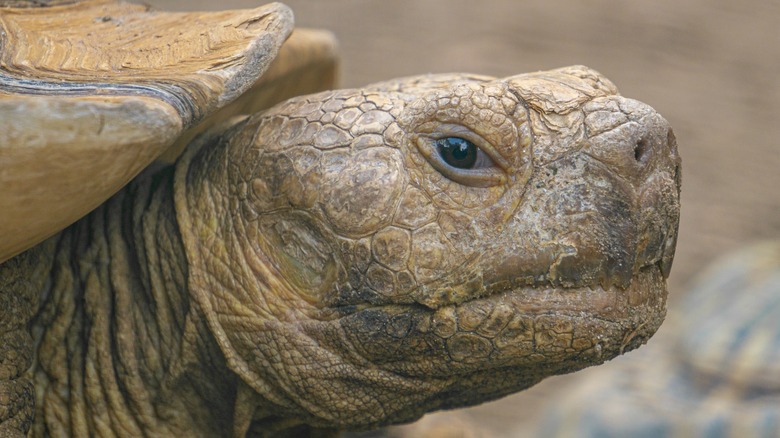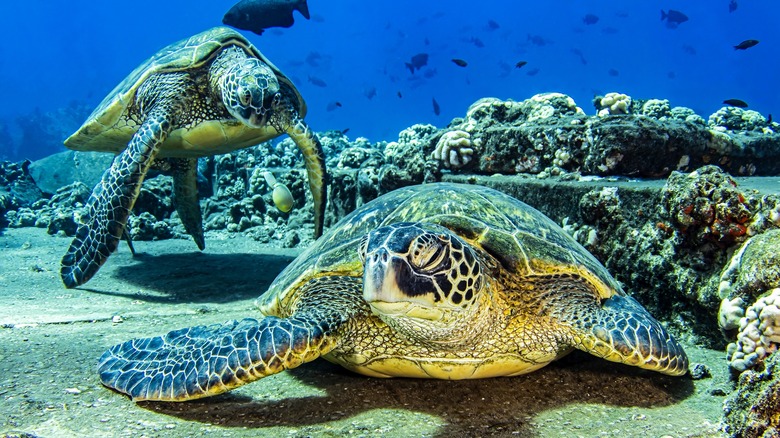Here's The Real Difference Between A Turtle And A Tortoise
This wonderful planet we call home isn't the exclusive property of humanity (though some of us may behave as though that's the case). In the grand scheme of things, we're just a tiny drop in the metaphorical ocean of species that live here on Earth. There's a mind-boggling number of them, as it happens. According to the 2011 study "How Many Species Are There on Earth and in the Ocean?" by Camilo Mora et al (via PLOS), the answer is an estimated 8.7 million in total.
The fascinating thing for zoologists and animal experts is just how diverse these species are. From infinitely teeny tiny lifeforms like viruses to the blue whale (which Guinness World Records declared the largest animal on the planet), Earth is home to an incredibly varied range of creatures.
At the same time, though, these differences are often much more than skin deep. On the surface level, crocodiles and alligators are difficult to distinguish from each other, but experts can tell them apart immediately. The same is true of turtles and tortoises. There are some surprisingly significant differences between the species.
What's in a name?
Juice, as you'll probably know, comes in all sorts of varieties too. The ever-popular orange juice tends to dominate the juice world, but there are many other popular types besides. Apple is also a quintessential juice flavor, as is the particularly tart grapefruit juice, and so on. Many people have many different favorites. While they can all be lumped into the simple category of "juice," there are vital distinctions to be made. Which brings us to the whole tortoise and turtle issue.
As Britannica reports, both turtles and tortoises are defined by their characteristic shells, and their classification as both reptiles and members of the Testudines order. In this regard, they are very similar.
What sets them apart from each other? It boils down to their lifestyle habitats and eating habits. In terms of food access, the two go hand in hand, and this is just one important reason why you'll never see a tortoise in your local swimming pool.
Turtles are keen swimmers and omnivores, tortoises generally aren't either
The Wilton Pet Centre explains that, by and large, tortoises are herbivores. The leopard, horsefield, spur-thighed, Hermann, dwarf Hermann, marginated and sulcata tortoise eat vegetarian diets. The red-footed tortoise, as an omnivore, is a bit of an anomaly in that regard. Turtles, meanwhile, are apt to be omnivores and carnivores. The magnificent hawksbill turtle, for example, is carnivorous. According to National Geographic, they dwell in shallower waters, enjoying sea sponges, jellyfish, algae and other aquatic delights. They also boast formidable little claws on their flippers, and that hints at the other primary difference between turtles and tortoises.
Many turtles tend to be almost solely aquatic, per Britannica, famously laying their eggs on beaches and other such locales but otherwise spending their time in the water. Tortoises, on the other hand, are terrestrial animals, usually seen lumbering along in an endearingly leisurely fashion. As such, they don't have flippers or webbing on theirs as turtles do, as they have no need of it. This difference in environmental preference, as well as diet, explains the major difference between the turtle and tortoise.


